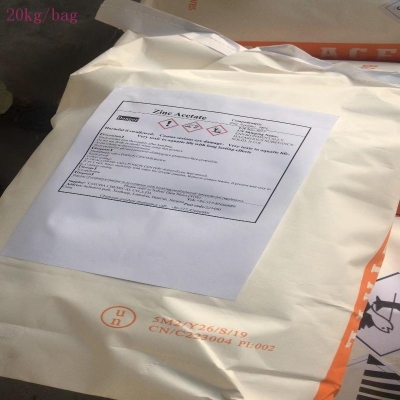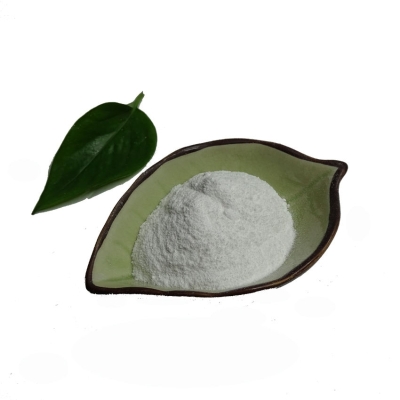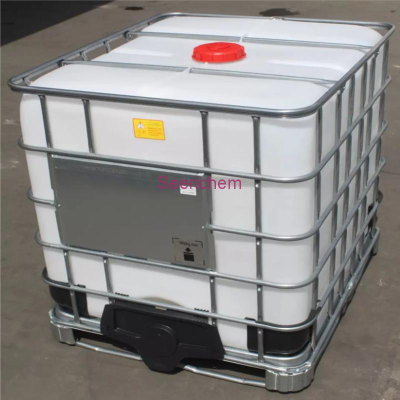-
Categories
-
Pharmaceutical Intermediates
-
Active Pharmaceutical Ingredients
-
Food Additives
- Industrial Coatings
- Agrochemicals
- Dyes and Pigments
- Surfactant
- Flavors and Fragrances
- Chemical Reagents
- Catalyst and Auxiliary
- Natural Products
- Inorganic Chemistry
-
Organic Chemistry
-
Biochemical Engineering
- Analytical Chemistry
-
Cosmetic Ingredient
- Water Treatment Chemical
-
Pharmaceutical Intermediates
Promotion
ECHEMI Mall
Wholesale
Weekly Price
Exhibition
News
-
Trade Service
Recently, the Ministry of Industry and Information Technology Announcement No.
56 of 2016 issued a batch of chemical industry standards.
Among them, fertilizer product standards include urea containing humic acid, humic acid compound fertilizer, urea containing alginic acid, alginic acid fertilizers, and water-soluble phosphoric acid.
Ammonium, fertilizer grade potassium dihydrogen phosphate.
These chemical industry standards will be officially implemented on April 1, 2017.
The zero growth and reduction of chemical fertilizers are inseparable from the creation and promotion of new fertilizers.
At the beginning of 2015, the Ministry of Agriculture issued the "Action Plan for the Zero Growth of Fertilizer Use by 2020", which analyzed the current status and existing problems of chemical fertilizer application in China, and clearly proposed Increase the utilization rate of chemical fertilizers and the goal of zero growth in chemical fertilizer application.
Regarding how to achieve the goal of zero growth, the Ministry of Agriculture has listed four technical paths: one is to refine, promote precision fertilization and reduce blind fertilization; the second is to adjust and adjust the structure of fertilizer use; the third is to reform and improve the way of fertilization; the fourth is to replace.
Use organic nutrient resources to partially replace chemical fertilizers to improve the basic fertility of arable land.
New fertilizers are inseparable for achieving zero growth of chemical fertilizers and increasing efficiency by reducing fertilizers.
The Ministry of Agriculture proposed that adjusting the structure of fertilizer use should not only optimize the ratio of nitrogen, phosphorus and potassium, promote the coordination of large and medium and trace elements, but also adapt to the needs of modern agricultural development, guide the optimization and upgrade of fertilizer products, and vigorously promote high-efficiency new fertilizers.
In order to cope with the adjustment of the agricultural fertilizer use structure, the Ministry of Industry and Information Technology emphasized in the "Guiding Opinions on Promoting the Transformation and Development of the Chemical Fertilizer Industry" that the fertilizer industry must adjust the product structure, enhance innovation capabilities, strengthen agrochemical services, and develop efficient and environmentally friendly new models.
fertilizer.
The development of new fertilizers requires standards to regulate the development of new fertilizers.
The HG/T4851-2016 "Nitro Compound Fertilizer" implemented on July 1, 2016 is a chemical industry standard approved and issued by the Ministry of Industry and Information Technology, which stipulates nitro, nitrosulfur, and nitrochloro compound The technical indicators and product labeling requirements of fertilizers.
The 6 standards for humic acid-containing urea, humic acid compound fertilizer, alginate-containing urea, alginic acid fertilizers, water-soluble monoammonium phosphate, and fertilizer grade potassium dihydrogen phosphate approved and released this time will be implemented on April 1, 2017 .
56 of 2016 issued a batch of chemical industry standards.
Among them, fertilizer product standards include urea containing humic acid, humic acid compound fertilizer, urea containing alginic acid, alginic acid fertilizers, and water-soluble phosphoric acid.
Ammonium, fertilizer grade potassium dihydrogen phosphate.
These chemical industry standards will be officially implemented on April 1, 2017.
The zero growth and reduction of chemical fertilizers are inseparable from the creation and promotion of new fertilizers.
At the beginning of 2015, the Ministry of Agriculture issued the "Action Plan for the Zero Growth of Fertilizer Use by 2020", which analyzed the current status and existing problems of chemical fertilizer application in China, and clearly proposed Increase the utilization rate of chemical fertilizers and the goal of zero growth in chemical fertilizer application.
Regarding how to achieve the goal of zero growth, the Ministry of Agriculture has listed four technical paths: one is to refine, promote precision fertilization and reduce blind fertilization; the second is to adjust and adjust the structure of fertilizer use; the third is to reform and improve the way of fertilization; the fourth is to replace.
Use organic nutrient resources to partially replace chemical fertilizers to improve the basic fertility of arable land.
New fertilizers are inseparable for achieving zero growth of chemical fertilizers and increasing efficiency by reducing fertilizers.
The Ministry of Agriculture proposed that adjusting the structure of fertilizer use should not only optimize the ratio of nitrogen, phosphorus and potassium, promote the coordination of large and medium and trace elements, but also adapt to the needs of modern agricultural development, guide the optimization and upgrade of fertilizer products, and vigorously promote high-efficiency new fertilizers.
In order to cope with the adjustment of the agricultural fertilizer use structure, the Ministry of Industry and Information Technology emphasized in the "Guiding Opinions on Promoting the Transformation and Development of the Chemical Fertilizer Industry" that the fertilizer industry must adjust the product structure, enhance innovation capabilities, strengthen agrochemical services, and develop efficient and environmentally friendly new models.
fertilizer.
The development of new fertilizers requires standards to regulate the development of new fertilizers.
The HG/T4851-2016 "Nitro Compound Fertilizer" implemented on July 1, 2016 is a chemical industry standard approved and issued by the Ministry of Industry and Information Technology, which stipulates nitro, nitrosulfur, and nitrochloro compound The technical indicators and product labeling requirements of fertilizers.
The 6 standards for humic acid-containing urea, humic acid compound fertilizer, alginate-containing urea, alginic acid fertilizers, water-soluble monoammonium phosphate, and fertilizer grade potassium dihydrogen phosphate approved and released this time will be implemented on April 1, 2017 .







